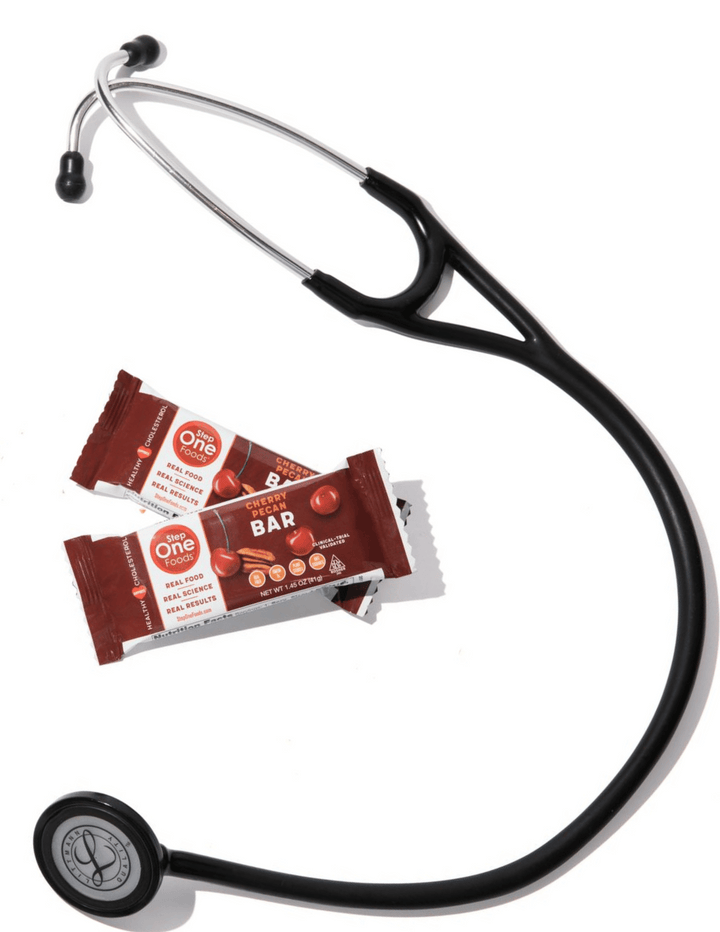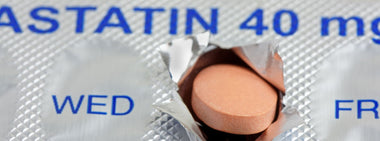Lead in dark chocolate. Should you be worried?

January 5, 2023 - Update on the high quality and safety of dark chocolate used in Step One Foods: As promised, we connected with our supplier and have confirmed that the dark chocolate we use in our products is regularly tested by an independent laboratory for lead and cadmium content and that levels of these elements routinely fall well below the already stringent limits set by the state of California (80-90% lower on average to be exact).
In the wake of the Consumer Reports article outlining lead (and cadmium) levels in dark chocolate, we have received several queries regarding the dark chocolate we use in our products. As this is a more complex topic than it appears on the surface, rather than providing answers piecemeal, I wanted to communicate with all of you via a mid-week blog.
I need to start by saying that you should not be worried! As you read below you will see that there is much more to this than the lead content of one food item and that a lot influences whether lead content of food has an impact on health. None of that is to imply that lead (or cadmium) content in our foods should be ignored. But given all the nuances, placing the CR study data in context is important.
There are many chocolate manufacturers and none of the samples tested by Consumer Reports included the specific chocolate we use in our products. But you should know that we work really hard to ensure we include only the finest ingredients that come from highly reputable suppliers providing maximum transparency around their production and processing, and that we obtain all mandated quality data from each supplier. We are not aware of excess lead or cadmium levels in the chocolate we use, but this information is not a routine part of product specifications, and given the findings of investigators at CR, we have reached out to our supplier to obtain the relevant data.
Stepping back, it's important to remember that food is complex and its interaction with our bodies is complex. For example, lead absorption is influenced by age. Children absorb lead 3 to 5 times as avidly than do adults. Consuming lead with food reduces lead absorption compared to consuming lead on its own (absorption can reach 60% when lead is consumed by itself, falling to 4% when it’s consumed as part of a meal). High dietary fiber intakes have been shown to yield lower lead levels in people with high environmental lead exposure, suggesting that a high fiber diet might help remove lead from our bodies. And there is a natural variation in all nutrient, mineral, and metal levels in our food supply, so it’s possible that CR’s testing today could come out quite differently with a different batch of the same chocolate bars tested a few months from now. Finally, none of us eat just chocolate, so we have to keep our entire food intake, averaged over time, in mind as well.
According to the FDA, “it is not possible to remove or completely prevent lead from entering the food supply. However, through policy and regulatory changes on the manufacturing and use of products that contain lead, there have been dramatic reductions in lead exposure from environmental contamination over the past 50 years. Two of the most significant actions happened in the 1970s:
- Manufacturing changes in the 1990’s, culminating with a ban on the use of lead solder in food cans.
- The Environmental Protection Agency’s actions to ban the use of lead additives in gasoline, which greatly contributed to reductions in lead air pollution and lead contamination of crops.”
The FDA assesses whether the amount of lead in a food product is high enough to raise a person’s blood lead level to a point of concern by calculating a maximum daily intake for lead from food, called the Interim Reference Level (IRL). “In determining the IRL, the FDA takes into account the amount of a particular food a person would need to consume daily, as well as other factors, that would result in blood lead levels of 3.5 ug/dL, the current level at which the CDC recommends clinical monitoring of lead exposure in children.
The FDA’s current IRL for lead consumption is calculated at 2.2 ug per day for children and 8.8 ug per day for females of childbearing age (updated in 2022) [and 6.0 ug per day for everyone else]. These levels allow for differences across human populations and are set nearly ten times less [emphasis added] than the actual amount of lead intake from food that would be required to reach the CDC’s blood reference level.” So the IRLs are already set very very low to minimize safety risks.
California's maximum allowable dose level (MADL) for lead is 0.5 ug per serving of food, which is different than the FDA’s approach of looking at a whole day’s consumption. Given that FDA does not provide a per serving equivalent, Consumer Reports focused on MADLs instead of IRLs. In their analysis CR found the highest lead levels in Hershey’s Dark Chocolate which came in at 265% of the 0.5 ug per serving MADL or 1.325 ug. That’s less than a quarter of FDA’s already very low daily IRL.
In other words, the amounts of lead found in all the chocolates tested by CR are already super low relative to the amount needed to impact health.
Again, this is in no way meant to whitewash CR’s finding or to imply that we shouldn't demand that our food be free of any and all toxins, or that we not strive to get contaminants out of our environment. But I did want to point out that this study should not lead to panic or have you worry just because you ate a Hershey's chocolate bar the other day! And to also remind all of us that, unfortunately, what gets published and propagated through media is meant to grab headlines and clicks - so the more provocative the better. As I've looked into this issue myself I learned a lot and realized there were many details left out of the coverage.
For our part, we are following up with our chocolate supplier to ensure they are on top of this issue and remain committed to always providing you with the best possible products.
Your health is our mission. We mean it when we say it.

Tested & Proven Results.
- Cardiologist formulated
- Supported by over 500 publications
- Clinically-proven, in a double-blind randomized trial with Mayo Clinic and The University of Manitoba
80% of participants lowered their cholesterol in just 30 days. With just two servings per day, Step One Foods offers a proven-effective way to naturally lower LDL (bad) cholesterol.
Get heart health tips and articles like this, delivered right to your email.
New articles every week.
You may also like...

Spring Into Heart Health: The Best Seasonal Foods to Eat Now

You don’t need to avoid foods with cholesterol…except for these



